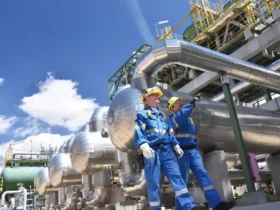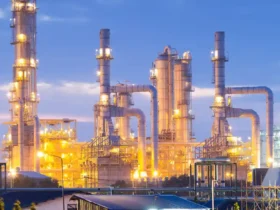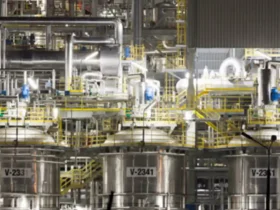
The chemical processing industry plays a vital role in modern society, producing everything from pharmaceuticals and fertilizers to plastics and fuels. However, this sector also poses significant environmental risks if not managed properly. With rising awareness of climate change, pollution, and sustainability, governments worldwide have enacted stringent environmental regulations that chemical manufacturers must adhere to.
In this article, we will explore the key environmental regulations affecting chemical processing, the importance of compliance, the strategies companies use to meet requirements, and how this evolving landscape shapes the future of the industry.
Why Environmental Regulations Matter
Environmental regulations aim to minimize the negative impact of industrial activity on the environment and public health. In chemical processing, these regulations address various concerns such as:
- Air and water pollution
- Hazardous waste disposal
- Chemical spill prevention and emergency response
- Greenhouse gas emissions
- Occupational safety and community health
Compliance is not just about following the law—it also helps build public trust, prevent environmental disasters, and support long-term sustainability.
Key Environmental Regulations in Chemical Processing
Regulations may vary by country and region, but several international and national standards influence the chemical industry globally.
1. Clean Air Act (CAA)
Enforced in the United States by the Environmental Protection Agency (EPA), the CAA limits the emission of hazardous air pollutants (HAPs), including volatile organic compounds (VOCs), sulfur dioxide, nitrogen oxides, and particulate matter. Chemical plants must install control technologies like scrubbers, filters, or catalytic converters.
2. Clean Water Act (CWA)
Also under the EPA, the CWA regulates discharge of pollutants into water bodies. It requires chemical facilities to obtain permits, monitor discharge, and use treatment methods to prevent contamination of rivers, lakes, and groundwater.
3. Resource Conservation and Recovery Act (RCRA)
RCRA governs the management of hazardous and non-hazardous solid waste. Chemical processors must properly classify, store, transport, and dispose of waste, maintaining detailed records to ensure traceability and accountability.
4. REACH (EU Regulation)
Registration, Evaluation, Authorization, and Restriction of Chemicals (REACH) is a European Union regulation that demands full transparency about chemicals manufactured or imported in quantities above one ton per year. It emphasizes safety data, usage restrictions, and pre-market authorization.
5. OSHA’s Process Safety Management (PSM)
Although primarily a safety regulation, OSHA’s PSM also includes environmental components. It ensures facilities handling highly hazardous chemicals have measures in place to prevent accidental releases.
Compliance Strategies in Chemical Processing
Meeting environmental standards is complex and requires a structured approach involving technology, management, and training.
1. Environmental Management Systems (EMS)
An EMS, such as ISO 14001, provides a framework to manage environmental responsibilities. It includes planning, implementation, monitoring, and continual improvement.
2. Pollution Control Technologies
Chemical plants invest in technologies to reduce emissions and waste:
- Scrubbers for gas purification
- Effluent treatment plants (ETPs) for wastewater
- Incinerators for hazardous waste
- Leak detection systems for volatile chemicals
These systems help facilities stay within regulatory limits.
3. Regular Audits and Reporting
Companies conduct internal audits and submit environmental reports to regulatory authorities. This includes emission data, waste handling logs, and environmental impact assessments.
Digital compliance software can streamline documentation and flag anomalies for prompt action.
4. Employee Training and Awareness
Compliance depends on employee behavior. Regular training ensures staff understand handling procedures, safety protocols, and emergency response tactics.
Workshops and drills prepare teams to respond effectively to spills, leaks, or other incidents.
5. Green Chemistry and Sustainable Practices
To go beyond compliance, many companies adopt green chemistry principles:
- Designing processes that generate less waste
- Using safer raw materials and solvents
- Improving energy efficiency
These practices reduce regulatory pressure and appeal to environmentally conscious consumers and investors.
Challenges in Achieving Compliance
Despite best efforts, chemical companies often face hurdles:
- Complexity of regulations: Navigating overlapping local, national, and international laws can be difficult.
- Cost of compliance: Upgrading equipment and systems requires significant capital.
- Changing legislation: Regulations evolve quickly, requiring continuous monitoring and adaptation.
- Data management: Gathering, analyzing, and reporting environmental data can be overwhelming without proper tools.
Benefits of Compliance Beyond Legal Requirements
While compliance helps avoid fines and shutdowns, it offers broader advantages:
- Improved operational efficiency
- Reduced risk of environmental incidents
- Enhanced reputation and stakeholder trust
- Eligibility for green financing or government incentives
Companies that exceed compliance often gain a competitive edge through innovation and customer loyalty.
The Future of Environmental Compliance in Chemical Processing
With global focus shifting toward climate change and sustainability, future compliance will emphasize:
- Carbon footprint reduction: Cap-and-trade systems and carbon taxes will influence operations.
- Circular economy practices: Waste minimization and material recycling will become mandatory.
- Real-time monitoring: IoT sensors and AI analytics will enable proactive compliance.
- Transparency and ESG reporting: Investors will expect detailed environmental, social, and governance disclosures.
Companies must prepare now by investing in clean technologies, digital systems, and employee development.
Environmental regulations in chemical processing are both a challenge and an opportunity. They demand diligence, innovation, and adaptability—but also push the industry toward safer, cleaner, and more sustainable operations.
By prioritizing compliance and embedding it into their culture, chemical companies can protect the environment, uphold public trust, and secure their future in an increasingly eco-conscious world.







Leave a Reply